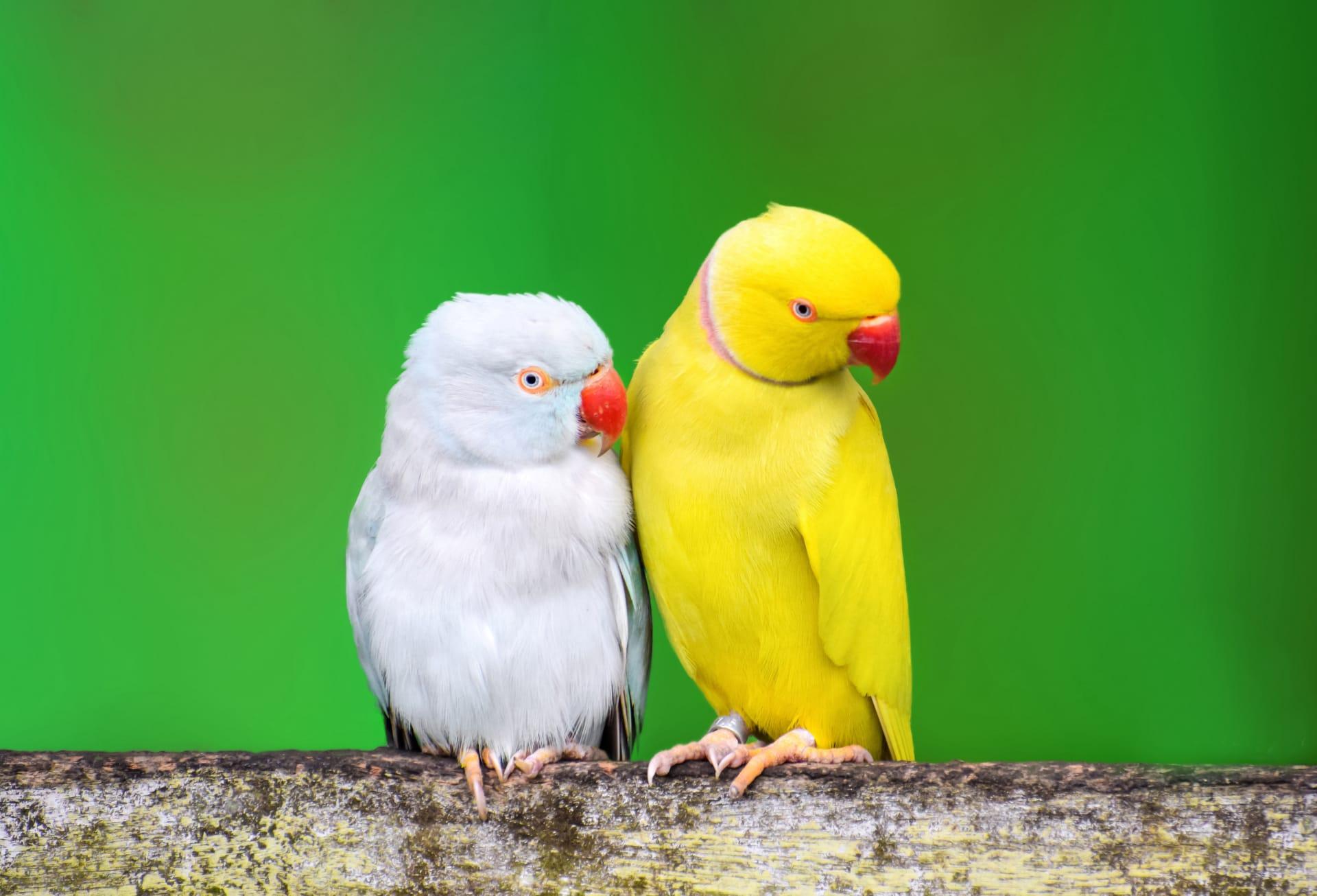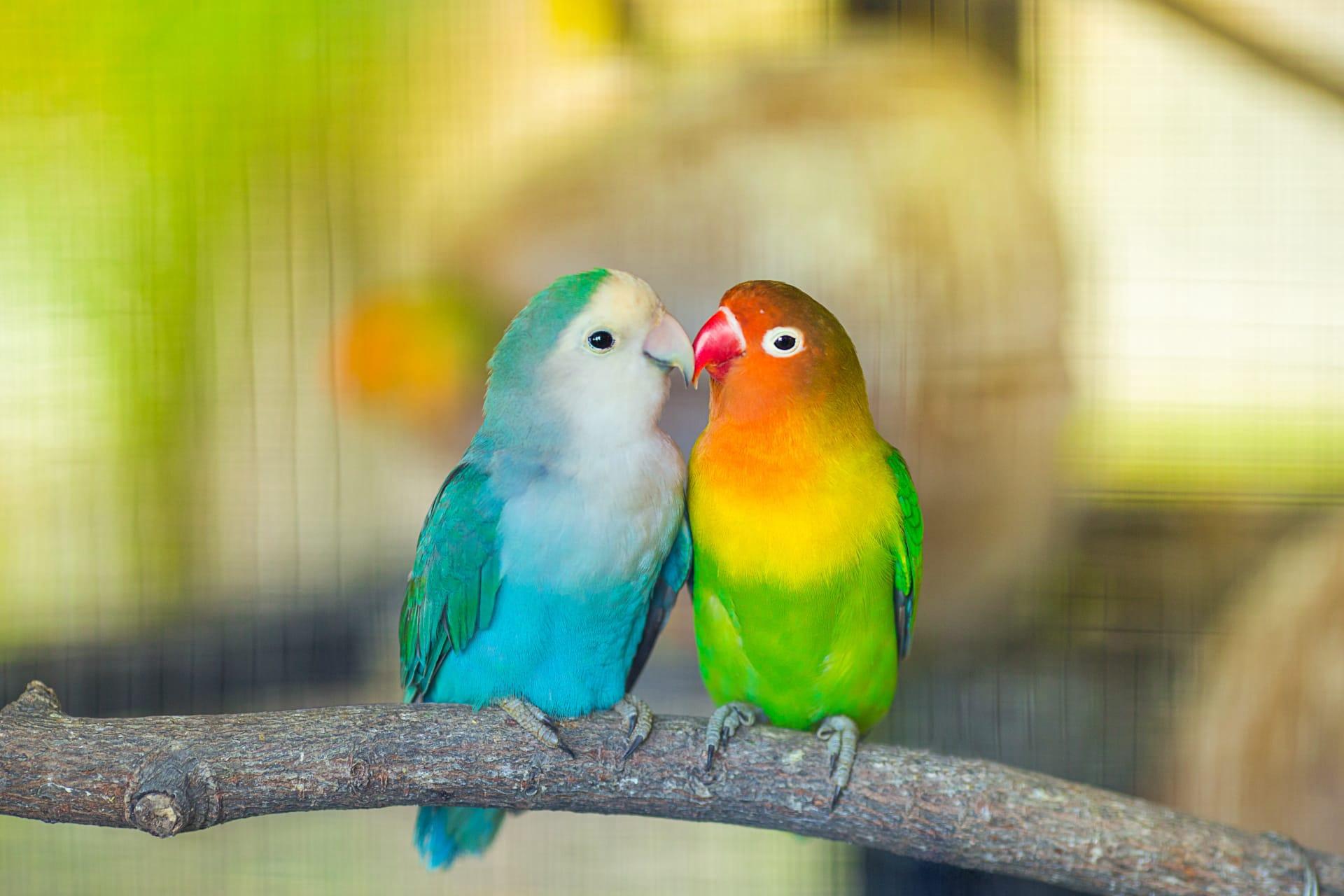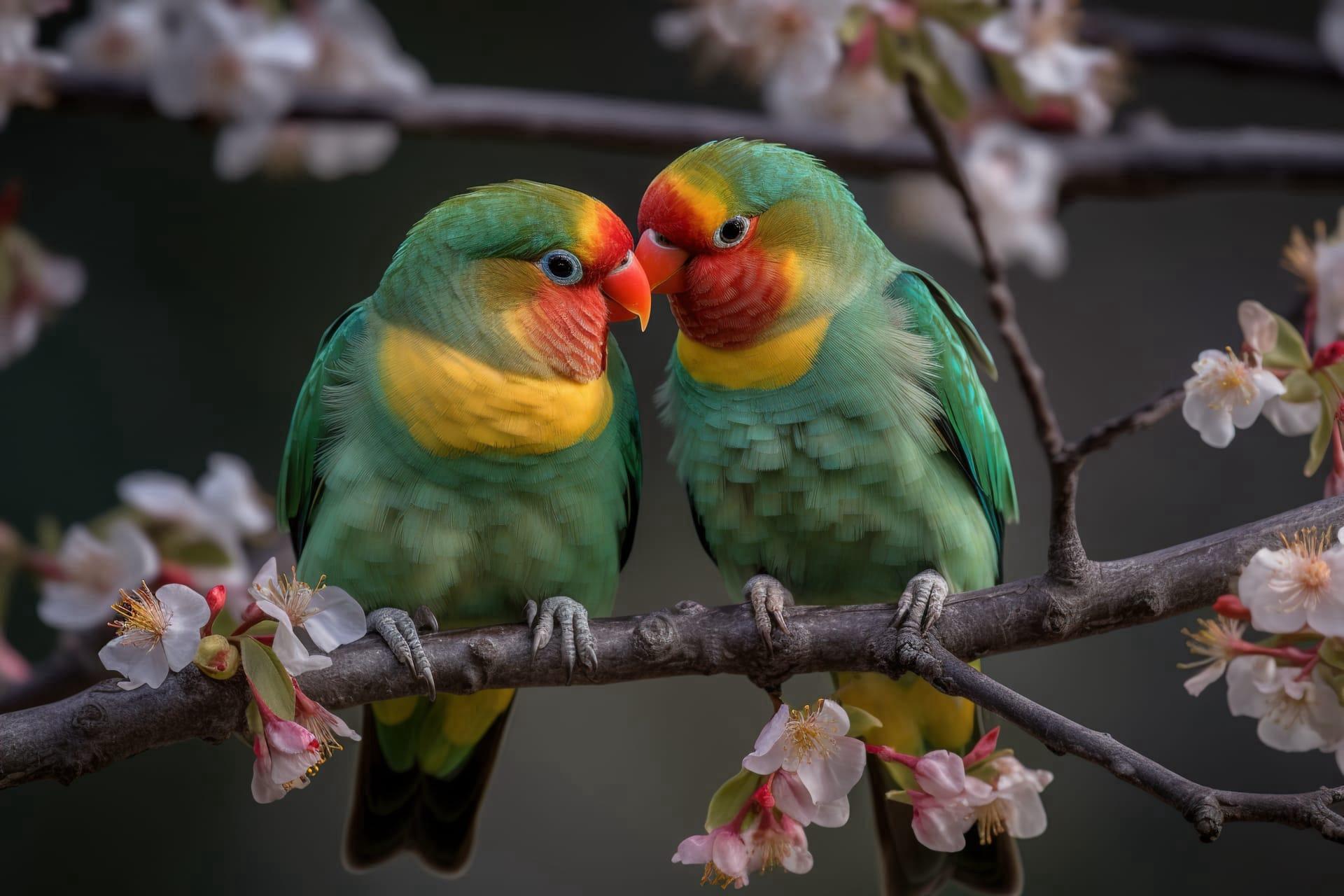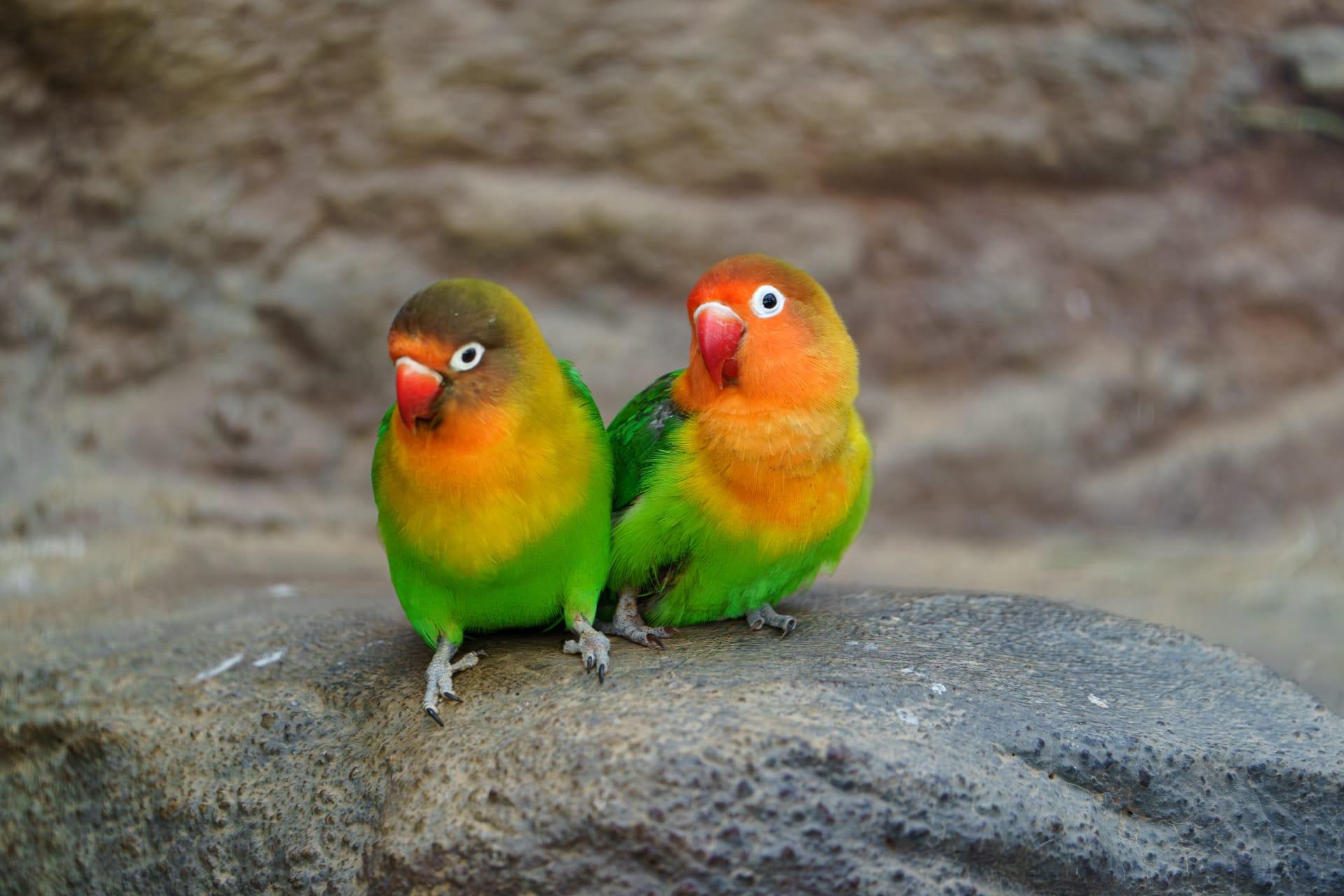Lovebird Trivia
- Home /
- Trivia Question /
- Animal /
- Lovebird Trivia
1
Question: How long do Lovebirds typically live, and does their lifespan change in captivity?
Answer: Lovebirds can live up to 10-15 years, a testament to their hardy nature. In captivity, with proper care, their lifespan often extends towards the upper end of this range due to a stable diet, absence of predators, and regular veterinary care.
Question: What's the range of colors that Lovebirds come in, and are these colors influenced by their diet?
Answer: Lovebirds boast a vibrant palette including greens, yellows, reds, and blues. Their coloration is largely genetic, but a healthy diet rich in natural pigments like carotenoids (found in fresh fruits and vegetables) can enhance the brightness and vibrancy of their feathers.

2
Question: Is it true that Lovebirds must always be kept in pairs, or they'll die of loneliness?
Answer: While Lovebirds are social and thrive in pairs, they won't necessarily die if kept alone. However, single Lovebirds require more attention and interaction from their human companions to prevent loneliness and boredom.
Question: Do Lovebirds really mate for life, and what happens if their partner dies?
Answer: Lovebirds are known for strong pair bonds, often described as 'mating for life'. However, if one partner dies, the surviving bird may bond with another Lovebird or even a human caretaker, indicating their adaptability and need for social interaction.

3
Question: Can Lovebirds talk or mimic human speech like some other parrots?
Answer: Lovebirds are not renowned for their talking ability. Unlike larger parrots like African Greys, Lovebirds can at best manage a few words or sounds, but they're more known for their chirps and unique vocalizations.
Question: How intelligent are Lovebirds, and can they perform tricks or solve puzzles?
Answer: Lovebirds are quite intelligent and curious. They can learn to perform simple tricks and enjoy engaging with toys and puzzles, which also serves as mental stimulation and prevents boredom in captivity.

4
Question: What's the typical diet for a Lovebird in the wild, and how does it differ from what they're fed in captivity?
Answer: In the wild, Lovebirds feed on a variety of seeds, fruits, berries, and vegetation. In captivity, a balanced diet includes a mix of specially formulated pellets, fresh fruits and vegetables, and occasional seeds and nuts for treats, providing a more controlled and varied nutrient intake.
Question: Are Lovebirds easy to breed in captivity, and how many eggs do they typically lay?
Answer: Breeding Lovebirds can be straightforward with the right conditions, including a spacious cage, nesting box, and proper diet. A female Lovebird typically lays 4-6 eggs per clutch, which hatch after about 23 days of incubation.

5
Question: How do Lovebirds communicate with each other, and what are some common behaviors seen in these birds?
Answer: Lovebirds communicate through a series of chirps, squawks, and body language. Common behaviors include preening (both themselves and their partners), head bobbing, and wing flapping, all serving as social interactions or expressions of mood.
Question: Can Lovebirds be trained to live outside their cage, and how do you ensure they don't fly away?
Answer: Lovebirds can be trained to spend time outside their cage. It's essential to bird-proof the room by closing windows and doors, covering mirrors, and removing toxic plants or dangerous items. Wing clipping is a controversial method to prevent flight, but many owners prefer to keep their Lovebirds fully flighted and supervise their out-of-cage time closely.